India vs Australia 2nd Test: Rohit Sharma’s Determination, Virat Kohli Tested at Nets
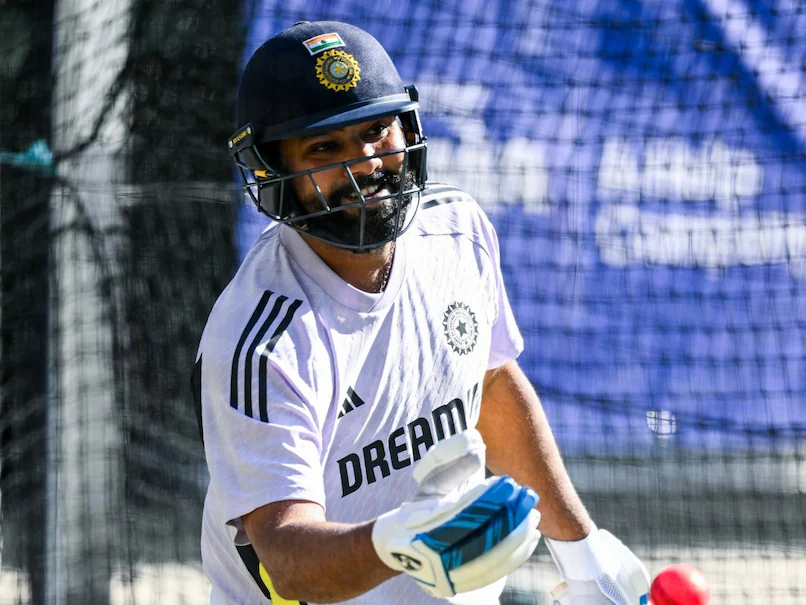
India’s skipper, Rohit Sharma, took on an intense double training session as fans cheered during a four-hour net practice at the Adelaide Oval on Tuesday. Amid speculation of Rohit moving down the batting order to accommodate the in-form opening pair of Yashasvi Jaiswal and KL Rahul, the captain exhibited immense resolve while facing the challenging Pink Kookaburra. The Indian team utilized four nets at the practice arena, each buzzing with activity. In the first net, Jaiswal and Rahul sharpened their skills, while the second was occupied by Shubman Gill and Virat Kohli. The third net saw Rohit Sharma alongside wicketkeeper-batsman Rishabh Pant. The final net was reserved for Nitish Kumar Reddy and Washington Sundar. Based on the net lineup, the probable Indian batting order seemed to stretch from Jaiswal and Rahul at the top to Washington Sundar at No. 8. However, Rohit’s commitment stood out as he arrived an hour earlier with Pant and the support staff to begin his rigorous preparation. Rohit worked extensively with side-arm throwdown specialists, including Nuwan Seneviratne, Raghavendra, and Dayanand Garani. The skipper focused on leaving deliveries pitched on a challenging length, demonstrating discipline. However, when faced with short-pitched balls, his effortless pull shots showcased his authority. For fans present at the open session, the experience was a delight. Many Australia-based Indian supporters likened the opportunity to being in a candy store, given their close proximity to their cricketing idols. Among the bowlers, the Bengal pace duo of Mukesh Kumar and Akash Deep impressed during the session. Mukesh showcased his ability to move the ball in the air, presenting a formidable challenge for Virat Kohli. Meanwhile, Akash tested Gill with probing deliveries, although the young batter handled them confidently. The session also highlighted the raw pace of Harshit Rana, India’s promising fast bowler. Guided by bowling coach Morne Morkel and mentor Gautam Gambhir, Harshit’s brisk pace left an impression, suggesting bright prospects for the future. Rohit’s intensive preparation hints at his adaptability and readiness to potentially anchor the middle order, should the team opt to persist with the successful Jaiswal-Rahul opening combination. His resolve at the nets, combined with his calculated approach against challenging deliveries, reflects his leadership and commitment to India’s success in the series. The practice session provided fans and analysts a glimpse of India’s meticulous preparation ahead of the crucial second Test. With Australia posing a formidable challenge, the team’s focus and strategies will be crucial in Adelaide, as India seeks to gain an upper hand in the high-stakes encounter.
India Receive Major Boost Ahead of Day-Night Test vs Australia, Gambhir Returns to Take Key Selection Decisions
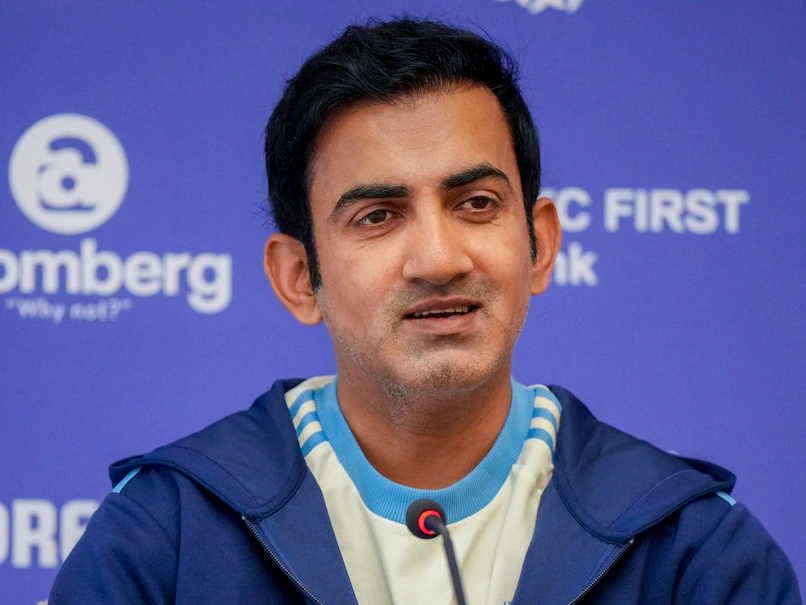
India head coach Gautam Gambhir is set to rejoin the Rohit Sharma-led squad in Australia on Tuesday after attending to personal matters in India. Gambhir had missed the two-day pink-ball tour game against the Australian Prime Minister’s XI in Canberra, which was reduced to a limited-overs contest due to rain. His absence coincided with the conclusion of the first Test of the Border-Gavaskar Trophy (BGT) series in Perth. While Gambhir was away, India’s support staff, including Abhishek Nayar, Ryan ten Doeschate, and Morne Morkel, managed the team’s preparations for the tour match. The game saw impressive performances from Harshit Rana, who claimed 4 for 44, and Shubman Gill, who scored a brisk 50 off 62 balls. India secured a six-wicket victory, boosting morale ahead of the crucial day-night Test at Adelaide Oval starting December 6. The Indian team traveled to Adelaide from Canberra on Monday and is scheduled to hold three practice sessions, two of which will take place under lights on Tuesday and Thursday. With Gambhir back at the helm, critical selection decisions are on the horizon. India will welcome full-time captain Rohit Sharma, who missed the first Test to be with his wife for the birth of their second child. In his absence, Jasprit Bumrah led the team to a commanding 295-run win in Perth. Another key player returning to contention is Shubman Gill, who missed the first Test due to a fractured thumb sustained during training. His availability introduces a potential shuffle in the playing XI. Gill is expected to slot into the No. 3 position, while Rohit Sharma could return to the middle order, batting behind Virat Kohli. The opening combination is a matter of significant debate. Yashasvi Jaiswal and K.L. Rahul formed a formidable partnership in Perth, amassing a double-century stand in the second innings. Their strong performance presents a compelling case to retain their positions as openers. If this pairing continues, Gill’s inclusion might lead to Devdutt Padikkal and Dhruv Jurel making way in the playing XI. The pink-ball game in Canberra provided some insights into India’s potential strategy for the second Test. While not a definitive contest, it showcased the team’s depth and adaptability. Jaiswal and Rahul’s consistency as openers, coupled with Gill’s ability at No. 3, offers a balanced top order. In the middle, Rohit Sharma, Virat Kohli, and wicketkeeper-batter Rishabh Pant are likely to provide stability and experience. Gambhir’s return brings clarity and leadership to the squad, especially with high-stakes selection calls ahead of the pink-ball Test. With a well-rounded team and a dominant start in the series, India looks poised to maintain momentum as they prepare for the next challenge in Adelaide.
IND vs SA: Swarm of Flying Ants Halts Third India vs South Africa T20I Match
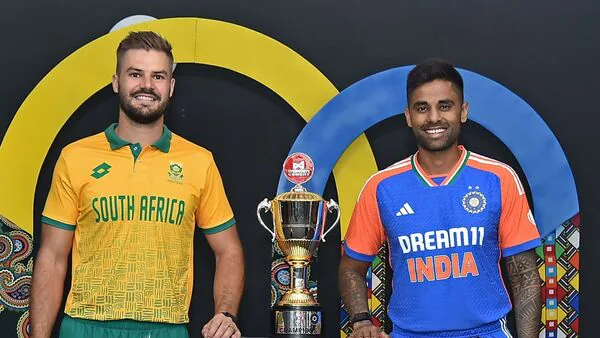
The third T20I match between India and South Africa took an unexpected turn at Centurion Stadium as it was briefly halted, not due to rain or bad light, but rather because of an unusual invasion— a swarm of flying ants that engulfed the field. With the series tied 1-1, this match had high stakes and drew much attention, but the surprising interruption by these insects became a focal point for fans and players alike. The Interruption After India finished their innings with an impressive score of 219/6, South Africa was tasked with chasing a substantial target. Arshdeep Singh opened the bowling for India, and South Africa managed to score seven runs without losing a wicket in the first over. As Hardik Pandya prepared to bowl the second over, the on-field umpires noticed a troubling situation. A cloud of flying ants descended on the field, with many insects getting dangerously close to the players, even flying into their eyes. Both the umpires and players were visibly uncomfortable, prompting the umpires to halt the game to address the swarm. Arshdeep Singh, in particular, was seen trying to brush ants away from his face and eyes during his over. Concerned for the players’ safety, the officials decided it was best to pause the match until the swarm cleared. The Groundsmen’s Response To handle the situation, groundsmen brought in special vacuum equipment to clean up the field. Cameras captured the unusual scene of grounds staff vacuuming the pitch and other affected areas, trying to rid the field of the ants. The grounds crew worked quickly and effectively to minimize the delay, as this was not a typical pitch or weather-related problem. The entire process took some time, but fortunately, no overs were lost. After about 20 minutes, the game resumed around 11:10 pm, following an inspection by match officials who confirmed that the swarm had sufficiently dissipated. The match was able to proceed without any reduction in overs or additional interruptions. India’s Performance with the Bat Before the insect invasion stole the spotlight, India had delivered a powerhouse performance with the bat. South Africa’s captain, Aiden Markram, had once again won the toss and opted to bowl first, a decision he had consistently made throughout the series. However, India’s batters were in no mood to relent, determined to put up a massive total. Tilak Varma took the lead, smashing a remarkable 51-ball century, displaying his incredible skill and power-hitting abilities. His innings, which included boundaries and sixes that left the crowd cheering, set the foundation for India’s formidable total. Abhishek Sharma joined in the onslaught, with both batters playing with aggression and composure, ensuring that India posted a massive 219/6 at the end of their 20 overs. With a required rate of nearly 11 runs per over, South Africa faced an uphill battle in their chase. The Context of the Series Coming into this third match, the series was finely balanced at 1-1, with both teams securing one win each in the earlier games. This added extra intensity to the Centurion face-off, with both India and South Africa aiming to clinch the series lead. The unexpected delay, though strange, only amplified the tension and excitement surrounding this deciding game. Impact of the Delay The brief pause due to the flying ants did not affect the outcome of the game but offered a rare and memorable spectacle. Cricket fans across the world tuned in to watch, curious about this unusual stoppage. The umpires’ decision to halt the game momentarily was prudent, as it prioritized the players’ comfort and safety, allowing them to focus on the game without distractions or potential hazards caused by the insects. With the match back on track, South Africa resumed their innings, needing a monumental effort to chase down the 220-run target set by India. The early overs would be crucial as they aimed to keep up with the required run rate. The brief stoppage added an extra layer of drama to the already intense match, heightening anticipation for fans eager to see how South Africa would respond. Tilak Varma’s Knock: A Highlight Tilak Varma’s performance with the bat was one of the most talked-about aspects of the game. His aggressive 51-ball hundred was a treat for spectators and demonstrated his potential as a future star for Indian cricket. His powerful shots and well-timed boundaries kept the scoreboard ticking at a rapid pace, placing immense pressure on the South African bowlers. Alongside Abhishek Sharma’s support, Varma’s innings was instrumental in India reaching such an imposing total.
Title: Pakistan Resolute on Hosting Champions Trophy Games; Questions India’s Refusal to Play in Pakistan
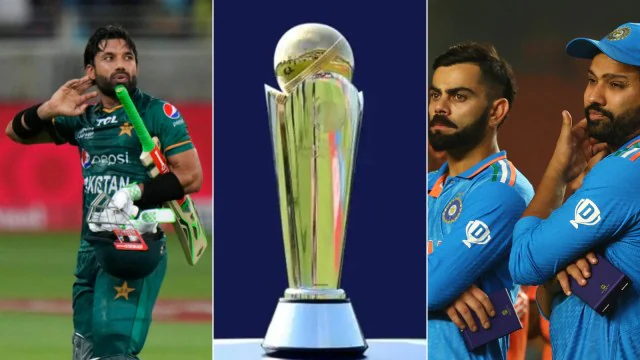
The upcoming ICC Champions Trophy 2025 has become a focal point of discussion, especially around the participation of India and Pakistan’s stance as the host nation. Scheduled to kick off on February 19, 2025, the tournament will culminate in the final match on March 9, with Karachi, Lahore, and Rawalpindi designated as the host cities. The Pakistan government has reportedly advised the Pakistan Cricket Board (PCB) to stand firm and keep all matches within Pakistan, despite India’s request to have their games held in a neutral venue like Dubai. This development follows the recent communication from the International Cricket Council (ICC) to the PCB, informing them of the Board of Control for Cricket in India’s (BCCI) refusal to cross the border for the Champions Trophy. According to sources, BCCI has expressed its preference for a neutral venue, pointing towards Dubai as a potential location for India’s games. However, Pakistan is not inclined to concede to this demand. A PCB official, who spoke on condition of anonymity, emphasized their stance: “Our government has directed us not to move any games out of Pakistan, and this will be our position when the time comes. We have been granted the hosting rights for the Champions Trophy, so there is no reason for us to shift games outside our borders.” In response to the BCCI’s decision, the PCB has reportedly sent a letter back to the ICC. Within it, the PCB has requested clarity from the BCCI, asking them to elaborate on the reasons behind their refusal to play in Pakistan. The official added, “The ICC reached out last week to inform us about India’s position. We replied with a questionnaire, seeking explanations from the BCCI. We’re interested in understanding their decision-making process, and as of now, moving games is not being considered.” Background: The India-Pakistan Cricket Stand-Off The ongoing impasse between the two cricket boards is reminiscent of the tense lead-up to the 2023 Asia Cup, where a similar deadlock occurred. India had refused to travel to Pakistan for the Asia Cup, while Pakistan, holding hosting rights, was reluctant to move any games outside its territory. In the end, however, Pakistan made a concession and India’s matches were shifted to Sri Lanka, allowing the tournament to proceed. India and Pakistan share a long and often contentious political history, which has seeped into their cricketing relationship over the years. The two nations haven’t met in a bilateral cricket series since 2013, with most of their encounters now limited to ICC or other multi-nation tournaments. India last visited Pakistan for a cricket tour over 16 years ago, making the Champions Trophy a significant event if it were to involve an Indian visit. Potential for Diplomatic Breakthrough The tensions surrounding the Champions Trophy come amidst some hope for diplomatic progress. Last month, there was a notable meeting between India’s External Affairs Minister S. Jaishankar and Pakistan’s Deputy Prime Minister and Foreign Minister Muhammad Ishaq Dar at the Shanghai Cooperation Organisation (SCO) summit in Islamabad. It was the first high-level meeting between the two nations since 2015, raising optimism for improved relations and, perhaps, a willingness to revisit and resolve sporting ties. For now, both the BCCI and PCB stand firm in their respective positions. While India remains unwilling to play within Pakistani borders, Pakistan is equally resolute in its decision to host all games domestically. As the start date for the Champions Trophy inches closer, the ICC will likely play a central role in mediating between the two cricketing giants to determine whether a compromise can be reached or if India’s games will indeed be moved to a neutral venue.
IPL 2025: Dhoni Hints at Potential Return; ‘Just Want to Enjoy Whatever Last Few Years of Cricket I’m Able to Play’
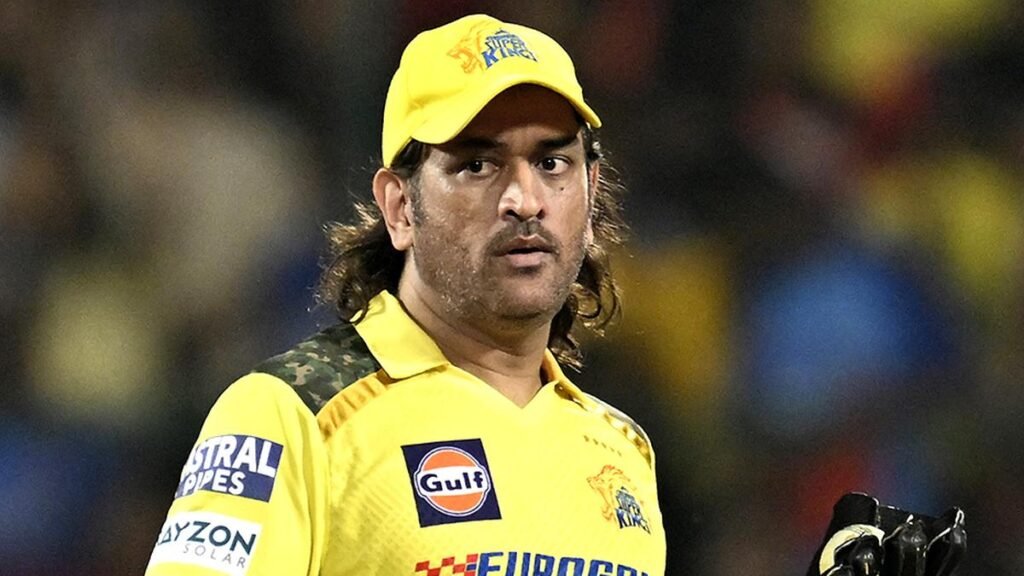
The Indian Premier League (IPL) has seen legendary moments, but few can match the lasting impact MS Dhoni has made. As the 2025 season looms, speculation around the former Chennai Super Kings (CSK) captain’s future has hit an all-time high. This conversation intensified when Dhoni, addressing fans and media alike, hinted that he might return for another season, saying he wishes to “enjoy whatever last few years of cricket” he has left. Given his status as a cricketing icon, this news has fueled an enormous wave of enthusiasm, speculation, and hope among fans and analysts worldwide. In this article, we’ll explore Dhoni’s IPL journey, the factors surrounding his potential comeback, the impact on CSK, and what this means for fans and the league overall. Dhoni’s IPL Legacy MS Dhoni’s journey with the IPL, particularly with CSK, is the stuff of legends. From leading the team to multiple championships to building a cult following among fans, Dhoni has made CSK synonymous with success. His calm demeanor, strategic brilliance, and powerful finishing skills turned CSK into one of the most formidable teams in IPL history. After leading CSK to their fifth title in 2023, Dhoni stepped back, handing over the captaincy to young and promising batsman Ruturaj Gaikwad. This transition was viewed as a shift toward a new era for CSK, with Gaikwad symbolizing the future. Yet, Dhoni’s presence remained an integral part of the team, even in a supporting role, whether batting lower down the order or providing mentorship. The Build-up of Speculation Dhoni’s choice to step down as captain stirred questions about his IPL future, especially since he began batting lower in the order, taking a more backseat role. Fans and experts interpreted these moves as indicators of an impending retirement, believing Dhoni would bow out gracefully after mentoring his successor and leaving CSK in capable hands. But his recent statement has thrown fans into a hopeful frenzy, with many speculating that the veteran wicketkeeper-batsman might return to the IPL arena in 2025. The phrase “last few years of cricket” suggests Dhoni’s deep connection with the game, a love he has openly expressed over the years. With the intensity of IPL games and the following he commands, it’s no surprise that Dhoni wants to extend his journey, enjoying each moment as he has always done throughout his career. Factors Influencing Dhoni’s Possible Return Fitness and Form: Dhoni’s enduring fitness and dedication are impressive, especially considering he is now in his early 40s. His decision to return will undoubtedly factor in his physical condition and ability to deliver consistent performances, especially under the pressure that IPL games bring. Fan Demand and Emotional Connection: The immense love and support from fans have always played a significant role in Dhoni’s cricketing choices. His potential return could be a nod to this fan base, giving them another chance to witness their beloved “Thala” in action. IPL without Dhoni seems unimaginable for many, making a potential comeback highly desirable for his followers. The Role as Mentor: Even though Dhoni stepped down as captain, he has continued to mentor Gaikwad and other emerging players in the squad. His influence on the team dynamics is undeniable, and a return would likely focus on combining his on-field contributions with his invaluable guidance to the younger players. CSK’s Composition and Team Balance: If Dhoni were to return, CSK’s team composition would likely need to be adjusted. Given that he has been taking a lower-order role, the team management might strategically plan for Dhoni’s position in the squad to ensure optimal balance and performance. The Emotional Aspect: Dhoni’s relationship with CSK and Chennai fans is unparalleled. This loyalty to both team and city might be the driving force behind Dhoni’s wish to extend his playing years, enjoying the few final outings in front of his home crowd. What a Dhoni Comeback Could Mean for CSK A return of Dhoni in the 2025 IPL season would have profound implications for CSK. As a strategist and leader, Dhoni’s presence in the lineup could provide an advantage that no other player can offer. His mere presence is reassuring for the team, providing tactical insights that enhance decision-making, especially under pressure. Dhoni’s potential role in the team could extend beyond just performance as he continues to nurture CSK’s younger talents, preparing them to eventually carry the team forward. The Broader Impact on IPL 2025 If Dhoni does return, it could be one of the biggest highlights of the IPL 2025 season. His announcement would likely trigger an overwhelming response from fans, who see him as more than just a cricketer. It’s the perfect storyline for the league to attract even more viewers, and it would add a layer of excitement, especially if this is expected to be Dhoni’s “last dance” in competitive cricket. The IPL brand, which already enjoys immense popularity, would benefit from a Dhoni comeback. His return could lead to increased ticket sales, viewership, and engagement on various platforms. This boost in fan interest could also inspire players across the league, adding a nostalgic yet electric atmosphere to the tournament. The Fans’ Perspective: Emotions Running High To say that Dhoni’s fans are hopeful for a comeback is an understatement. For fans, Dhoni represents an era of Indian cricket filled with achievements, inspiration, and resilience. His connection to his supporters is profound, and his possible return provides them with another opportunity to celebrate their idol. Social media has been flooded with posts, memes, and discussions centered around Dhoni’s statement, reflecting just how deeply fans value this cricketing legend. Conclusion: Will We See Dhoni in IPL 2025? Dhoni’s recent remarks have opened a window of possibility for his return to IPL, but the final decision remains with him. Whether he dons the CSK jersey once again or steps away, Dhoni’s influence and legacy will remain undiminished. His journey in cricket has been extraordinary, and a potential return in 2025 would only add to his remarkable story. For fans, the prospect of seeing “Thala”
IND vs NZ Second Test: MCA Secretary Apologises to Fans for Water Shortage
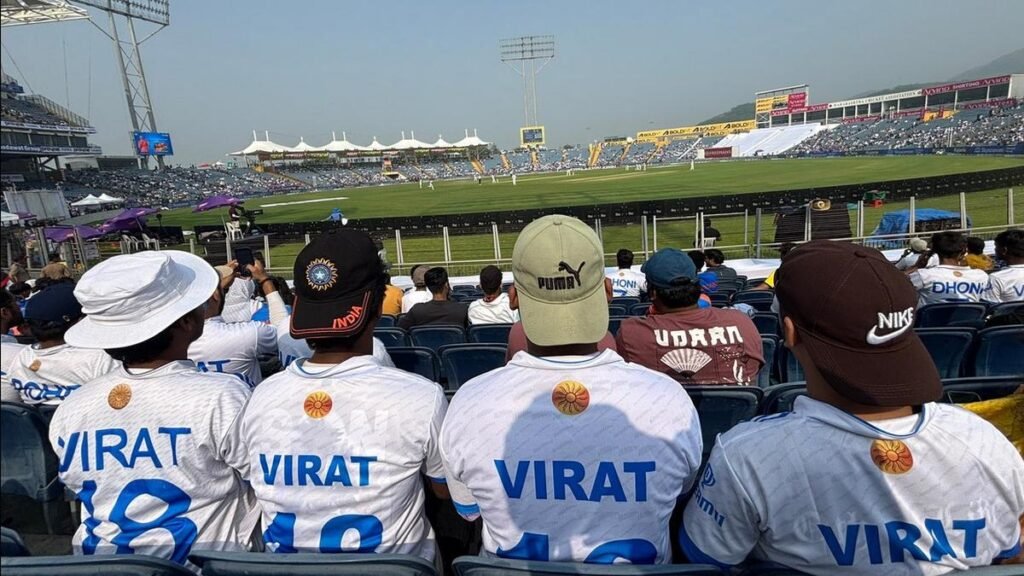
The highly anticipated second Test match between India and New Zealand at the Maharashtra Cricket Association (MCA) stadium left fans dehydrated as water kiosks in the stands ran dry on Day One. Around lunchtime, with the scorching sun beating down on the fans in the stands, most of which lacked any form of shade, free water kiosks ran out of water. The situation sparked frustration among the crowd, leading to widespread criticism of the event organizers. In response, the MCA secretary issued an official apology to the fans, acknowledging the failure to maintain basic amenities during the match. The Incident Cricket fans had gathered in large numbers to witness the intense contest between India and New Zealand at the MCA stadium, Pune. With temperatures soaring, spectators were relying heavily on the free water kiosks scattered around the stands to stay hydrated. However, during the peak heat around lunchtime, these kiosks ran out of water. The problem was exacerbated by the lack of shaded areas in most parts of the stadium, leaving fans exposed to the harsh sunlight without proper hydration. Disgruntled fans voiced their disappointment through various social media platforms, expressing anger over the lack of basic facilities during a major sporting event. As the day wore on, the situation became critical, with some fans reportedly having to leave the stands in search of water outside the stadium. MCA’s Response The Maharashtra Cricket Association (MCA) promptly addressed the issue, with the MCA secretary personally apologizing to the fans for the water shortage. In an official statement, the secretary expressed regret for the inconvenience caused and assured that immediate corrective measures were being taken to avoid such situations in the future. “We deeply regret the shortage of water during the first day of the second Test match between India and New Zealand. The scorching heat and the lack of water in the kiosks created an uncomfortable situation for the fans, and we sincerely apologize for the inconvenience. We are working to ensure that this does not happen again for the remainder of the match and for future events at the MCA stadium,” the MCA secretary said. Impact on Fans For the spectators, the lack of water was more than just an inconvenience; it was a health risk. Prolonged exposure to heat without proper hydration can lead to dehydration, heat exhaustion, or even heat stroke, making it crucial for large venues to provide enough drinking water to the attendees. The fans who had braved the sun to witness the India vs New Zealand match found themselves facing an unpleasant and potentially dangerous situation, marring the excitement of the game. Corrective Measures Following the apology, the MCA promised to take necessary measures to prevent such incidents. Water kiosks were restocked, and more water stations were set up around the stadium. Additionally, there were discussions about increasing the availability of shaded areas or providing temporary shelters to enhance the comfort of fans in future matches. Conclusion While the MCA’s quick response and apology helped mitigate some of the frustration, the water shortage incident during the India vs New Zealand Test match highlights the importance of better event planning, especially regarding the comfort and safety of fans. Moving forward, organizers will need to ensure that basic amenities like water and shade are adequately provided so that fans can enjoy the game without worrying about their health
Ruturaj Gaikwad to Lead India A in Australia: A Promising Test for Emerging Talents

Ruturaj Gaikwad has been handed the responsibility to lead India A in a highly anticipated tour of Australia, where the team will compete in two first-class matches against Australia A. The matches are scheduled from October 31 to November 10, taking place in Mackay and Melbourne. The tour will culminate in a three-day intra-squad practice match at the WACA in Perth, against the senior India men’s team. Gaikwad’s leadership comes on the back of his captaincy stint for India C in the Duleep Trophy, where his team finished second in the four-team points table. This tour presents a crucial opportunity for young Indian talents to showcase their skills in challenging Australian conditions. With the Border-Gavaskar Trophy on the horizon, this series could offer valuable insights for selectors into potential backups and future stars for India’s Test setup. India A Squad Overview The India A squad for the Australia tour is filled with promising names and seasoned performers. Alongside Ruturaj Gaikwad, who has been in fine form in the ongoing Ranji Trophy season, scoring 231 runs in two games, Abhimanyu Easwaran has been named vice-captain. Easwaran himself had a stellar Duleep Trophy, leading India B to a third-place finish and contributing two centuries in the process. Both Gaikwad and Easwaran, along with the in-form Sai Sudharsan, are likely to be considered as backup openers for India during the upcoming Border-Gavaskar Trophy series, making this tour all the more significant for them. The middle order will be strengthened by the presence of players like Devdutt Padikkal, Baba Indrajith, and Ricky Bhui. Bhui, the top run-scorer from the 2023-24 Ranji Trophy season and the 2024 Duleep Trophy, will look to carry his prolific form into the Australia tour. Tamil Nadu’s Baba Indrajith, who scored an impressive 767 runs in the previous Ranji season, also brings a wealth of experience to the team. A Focus on Wicket-keeping and Bowling Depth India A will feature two wicket-keepers, Ishan Kishan and Abishek Porel, both of whom are looking to cement their positions in the long run. Kishan, already a regular name in India’s limited-overs squad, will be keen to showcase his red-ball capabilities, while Porel’s steady rise makes him an interesting prospect for the future. In terms of the bowling attack, the pace unit is comprised of Mukesh Kumar, Khaleel Ahmed, Yash Dayal, and Navdeep Saini. This tour provides a platform for these bowlers to make their mark in foreign conditions, with extra attention likely on Mukesh Kumar, who has been gaining recognition for his consistent performances in domestic cricket. Spinner Tanush Kotian, who had an impressive run in the Duleep Trophy, will be the key figure in the spin department, while Nitish Kumar Reddy, who recently made his India debut in Gwalior, adds all-round depth to the squad. Schedule and Expectations The two first-class matches will be played at the Great Barrier Reef Arena in Mackay (October 31 to November 3) and the iconic Melbourne Cricket Ground (November 7 to November 10). These encounters will be critical in determining how India’s emerging talents fare in Australian conditions, especially with the pacers expected to play a crucial role on bouncier pitches. Following the two first-class matches, India A will play a three-day intra-squad match against the senior Indian men’s team at the WACA, Perth, from November 15 to November 17. This practice game will serve as a final preparation for the Test specialists ahead of the Border-Gavaskar Trophy. Conclusion Ruturaj Gaikwad’s captaincy of India A in Australia is a pivotal moment in his career and a crucial test for the entire squad. With several young players aiming to break into the senior team, the tour offers them the perfect platform to demonstrate their potential in conditions that are often tough for visiting teams. For India’s cricketing future, this tour could be the breeding ground for the next generation of stars.
West Indies Tour of Sri Lanka 2024: Anticipating the Thrilling Match on October 23
The West Indies tour of Sri Lanka in 2024 is shaping up to be a remarkable series between two teams rich in history, talent, and passion for the game. Scheduled for October 23, this match promises to be an exciting contest, especially with both teams seeking to build momentum as they prepare for future international challenges. This encounter will take place on Sri Lankan soil, known for its spin-friendly pitches and the enthusiastic home crowd. A Glance at the Teams Both the West Indies and Sri Lanka have undergone significant changes in recent years, with a blend of young talent and experienced players. While neither team is currently among the top-tier teams in world cricket, both are making strides in rebuilding their cricketing culture and achieving international success. The West Indies, renowned for their explosive style of play, are often unpredictable, capable of pulling off thrilling wins even against the best teams in the world. Sri Lanka, on the other hand, are known for their disciplined approach, with a focus on spin bowling and strategic gameplay, particularly when playing at home. The Venue: Spin-Friendliness of Sri Lankan Pitches Sri Lanka’s pitches, especially in venues like Galle, Kandy, and Colombo, are known to assist spinners significantly. This could provide a distinct advantage to Sri Lanka, who traditionally thrive on slow, turning tracks. The likes of Wanindu Hasaranga and Maheesh Theekshana will be looking to exploit these conditions to trouble the West Indian batting lineup. However, West Indies too have bowlers who can take advantage of slow pitches. Spinners such as Akeal Hosein and Gudakesh Motie will be key for the visitors, particularly in the middle overs. On the batting front, the West Indies will have to carefully negotiate the Sri Lankan spin attack, which could be their biggest challenge in this match. Key Players to Watch Out For Sri Lanka: Wanindu Hasaranga: Arguably one of the finest leg-spinners in world cricket today, Hasaranga has the ability to control the game with his variations and sharp turning deliveries. His batting lower down the order also makes him a vital asset for Sri Lanka. Dimuth Karunaratne: The Sri Lankan captain will be the backbone of the team’s batting order. His experience and calmness at the crease will be crucial in anchoring the innings and setting a solid foundation for the team. Kusal Mendis: With his aggressive stroke play and sharp wicketkeeping, Mendis can turn the tide of the game in Sri Lanka’s favor. His performances in the top order will be vital in countering the West Indies pace attack. West Indies: Nicholas Pooran: The hard-hitting wicketkeeper-batsman has been a consistent performer for the West Indies in limited-overs cricket. Known for his explosive batting, Pooran will be key in taking on the Sri Lankan bowlers, particularly in the middle and death overs. Jason Holder: One of the most experienced all-rounders in world cricket, Holder brings a wealth of experience to the West Indies side. His ability to contribute with both bat and ball will make him a player to watch out for. Shai Hope: The West Indies captain is known for his solid technique and calm approach at the top of the order. His ability to build an innings and anchor the team will be crucial, especially against Sri Lanka’s spinners. Head-to-Head Record Historically, Sri Lanka and West Indies have had a fairly balanced head-to-head record in international cricket. Sri Lanka has often dominated at home, while West Indies has been more successful on faster pitches in their home conditions or neutral venues. Both teams are unpredictable, making this match even more exciting as it’s difficult to predict who will come out on top. The Importance of the Match For both teams, this match is not just about winning a bilateral series; it’s about gaining much-needed confidence and momentum as they prepare for bigger international tournaments. The ICC Cricket World Cup is on the horizon, and both teams are looking to find their best combinations and tactics ahead of the tournament. Sri Lanka, with their home advantage, will be eager to assert their dominance, while the West Indies will be keen to prove they can adapt to subcontinent conditions and emerge victorious. For the young players on both sides, this match provides an opportunity to showcase their talent and make a case for their inclusion in future squads. Strategies and Challenges Sri Lanka’s Strategy:The Sri Lankan team will undoubtedly rely on their spinners to restrict the West Indies’ powerful batting lineup. They will aim to make early breakthroughs with the new ball, but it is in the middle overs where they will look to take control of the game with their spin attack. In terms of batting, Sri Lanka will need to build partnerships at the top and middle order. Their focus will likely be on playing smart, rotating the strike, and minimizing risks against the West Indian fast bowlers. West Indies’ Strategy:For the West Indies, the key will be to counter the spin threat and play aggressively against the Sri Lankan bowlers. The West Indies’ strength lies in their power-hitting, and they will look to capitalize on any loose deliveries, especially in the middle overs. They must also stay composed against Sri Lanka’s spin attack, which is likely to be relentless. On the bowling front, the West Indies will rely on their pacers to take early wickets and apply pressure on Sri Lanka’s top order. Spin will also play a crucial role in the middle overs, with Akeal Hosein likely to be a key bowler. Conclusion The match between Sri Lanka and the West Indies on October 23, 2024, promises to be an exciting contest between two sides looking to make their mark on the international stage. With both teams having unique strengths and weaknesses, this game could go either way, making it a must-watch for cricket fans around the world
Major Blow for India: Rohit Sharma May Miss Crucial Test Series vs Australia Due to Personal Reasons
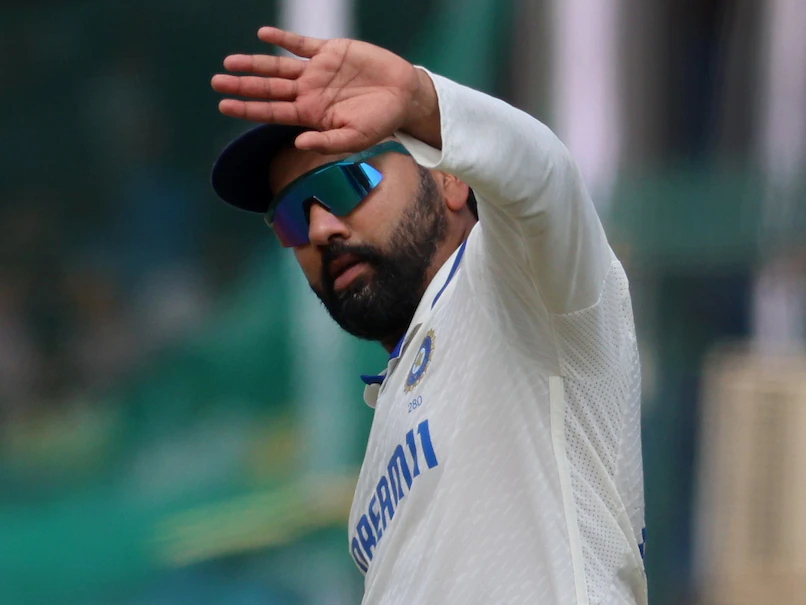
India’s preparations for the highly anticipated five-Test series against Australia, set to begin on November 22 in Perth, might suffer a significant setback as their captain, Rohit Sharma, could miss one of the early Test matches due to personal reasons. This potential absence comes at a critical juncture, and fans are eagerly awaiting confirmation of whether the star opener will be available for the full series. The Board of Control for Cricket in India (BCCI) has been informed by Rohit Sharma about the possibility of his unavailability for one of the initial two Tests. While details of the situation remain unclear, reports suggest that it is a pressing personal matter that could force Rohit to miss either the first Test in Perth or the second Test in Adelaide, which is scheduled between December 6 and 10. A BCCI official, speaking to PTI under the condition of anonymity, stated: “There isn’t complete clarity about Rohit Sharma’s situation at the moment. However, he has communicated with the BCCI that due to a personal matter, there is a chance he may have to skip one of the first two Tests at the start of the Australia series.” While there is still hope that the issue could be resolved before the start of the series, and Rohit might be able to participate in all five Test matches, the final decision will depend on how things unfold in the coming days. Fans and cricket experts alike are waiting anxiously to see if India’s experienced captain will be available for this crucial contest. At 37 years of age, Rohit remains one of the most critical players in India’s lineup, especially in overseas tours. He featured prominently in India’s recent Test series win at home against Bangladesh, playing in both matches. Before heading to Australia, India is scheduled to host New Zealand for a three-Test series starting on October 16. Rohit is expected to lead the team in that series, but the concerns about his availability for the Australia tour loom large. In the event that Rohit Sharma is unavailable for one of the Tests in Australia, Abhimanyu Easwaran, an in-form batsman and reliable option, is expected to step in as his replacement. Easwaran is currently in excellent touch and will also be leading the India A team in Australia, making him a strong candidate for the opening slot if needed. However, Easwaran isn’t the only option. India also has the likes of Shubman Gill and KL Rahul, both of whom have substantial experience as openers in Test cricket. Shubman Gill, in particular, has been in excellent form across formats, while KL Rahul remains a reliable, seasoned option, having previously opened for India in several overseas Tests. One area of uncertainty within the team is the role of vice-captain, as the Test squad did not have an officially designated deputy during their recent series against Bangladesh. This has led to speculation regarding who could step in as vice-captain if Rohit is unavailable. Cricket analyst and former player, Abhishek Nayar, commented on the matter, stating: “It’s important to remember that we have a number of IPL captains within this Indian squad. Shubman Gill, Rishabh Pant, and even someone like Yashasvi Jaiswal, who could be a key player in the future, all possess leadership qualities. While they may be young in terms of age and experience, mentally and as cricketers, they have the maturity and leadership required for the role.” When it comes to potential candidates for the vice-captaincy, there are three key names in the mix: Shubman Gill, Jasprit Bumrah, and Rishabh Pant. Gill, who serves as Rohit Sharma’s deputy in white-ball cricket, is a strong contender, especially given his consistency and leadership potential. Jasprit Bumrah, on the other hand, has already led the Indian Test team in England, proving his leadership credentials. His calm demeanor and tactical approach have impressed many, making him another viable option to take on the role of vice-captain. Then there’s Rishabh Pant, the dynamic wicketkeeper-batsman, who has shown glimpses of leadership potential, particularly during India’s memorable tour of Australia in 2020-21. Pant’s ability to inspire the team with his performances, as well as his growing maturity on the field, make him a strong contender for the leadership group. Nayar elaborated further on this subject, stating: “I wouldn’t label these players as youngsters anymore. Yes, they are younger in terms of age and the amount of cricket they’ve played compared to veterans, but they possess the leadership qualities needed for the role. There is no strict need to have a designated vice-captain, as several players in the squad are capable of stepping up when required.” The absence of a vice-captain could open the door for any one of these talented players to prove themselves as leaders on the international stage. With multiple players having captained their franchises in the Indian Premier League (IPL), the Indian squad is not short on leadership options, even in the absence of a formally appointed deputy. As Rohit Sharma’s potential absence continues to dominate headlines, the Indian team management and fans alike will be hoping that the personal matter is resolved swiftly and that their captain is available for the entirety of the grueling Test series against Australia. However, if Rohit does miss one of the early Tests, India has enough depth and leadership options to cope with his absence. For now, all eyes are on the Indian team as they prepare for a challenging few months of Test cricket, both at home and abroad, with the Australia tour set to be one of the most anticipated cricketing events of the year.
Why 2024’s ICC Women’s T20 World Cup Could Be the Most Exciting Yet

The 2024 ICC Women’s T20 World Cup is gearing up to be a spectacular event, with fans and teams alike preparing for a tournament that could showcase the most competitive cricket seen in years. The official hashtag for the event, #WhateverItTakes, captures the essence of what this World Cup will be all about—teams doing whatever it takes to claim the coveted title. While the stakes might not be as high as saving the universe, as in the famous Avengers: Endgame movie where the phrase gained popularity, the pressure and determination on the field will certainly be intense. The Perfect Time to Start Following Women’s Cricket This year’s World Cup will be a must-watch, particularly for those who are new to women’s cricket. The tournament will be held in Asia, which presents unique challenges for many teams not used to playing in these conditions. This helps level the playing field, making it harder for one team to dominate. Additionally, the rise of T20 leagues worldwide has drastically improved the skills of players from various nations, making the competition fiercer than ever before. With the retirement of Australia’s most successful captain, Meg Lanning, there’s now a vacuum at the top, and several teams will be fighting to claim the throne. Australia’s Challenge Without Meg Lanning Australia, the reigning champions, will still enter the tournament as favorites, but their journey to the top will not be as smooth as in previous years. Meg Lanning’s departure has left a significant gap, and while Alyssa Healy is set to take the reins, filling Lanning’s shoes will not be easy. Despite their rich history and dominance, Australia faces real competition this time around. Teams like India are eager to prove that the World Cup is not just a one-team show anymore. On Captains’ Day, Alyssa Healy emphasized how the mindset going into the tournament is all about winning: “You don’t come here to defend a title, that’s not what a World Cup is about, you come here to win it, so we’re here with that approach and I’m excited to get underway.” Her words reflect the hunger within the Australian camp, but they will be up against many teams determined to break their dominance. India’s Strong Contenders India, led by Harmanpreet Kaur, is one of the teams expected to challenge Australia the hardest. Harmanpreet acknowledges Australia’s strength but remains confident in India’s abilities: “We know that whenever we are playing against them and if we play our best cricket, we can beat them any day and any time.” India came agonizingly close to toppling Australia in the last World Cup, only to fall short in a heartbreaking semifinal loss. However, their recent performances against Australia in bilateral series show that they have the potential to outplay the champions when it matters most. Emerging Teams Ready to Surprise The 2024 World Cup will not just be a battle between Australia, India, and a couple of other traditional heavyweights. In fact, the tournament promises to be highly competitive across the board. Teams like Sri Lanka and Pakistan have significantly improved in recent years, defeating higher-ranked teams and shaking up the established order. The rise of domestic T20 leagues, such as the Women’s Premier League (WPL) and the Women’s Hundred, has contributed to the increased competitiveness of women’s cricket. These leagues have allowed players from around the world to compete against top-tier talent regularly, raising the standard of play across all participating nations. According to Poulami Das, a dedicated women’s cricket follower, “In the past few years, teams like Sri Lanka and Pakistan have beaten the big teams, making women’s cricket more competitive and fun to watch. Leagues like the WPL have brought great entertainment and hype to the game.” The gap between the top teams and the rest is closing, making this World Cup one where surprises could be just around the corner. Players to Watch Several of the world’s best players will take center stage at the 2024 World Cup, adding to the tournament’s excitement. Superstars like Smriti Mandhana, Marizanne Kapp, and Ellyse Perry will be leading their teams in what could be one of the most fiercely contested competitions in women’s cricket history. These players, along with many others, have developed their game to an elite level, thanks in part to exposure in top-tier domestic leagues around the world. As Ritwika Dhar, a long-time fan of women’s cricket, puts it, “Female cricketers have become household names. The increased professionalism has bridged the gap, and it is without a doubt going to be the most fiercely contested World Cup yet.” This is a sentiment echoed by many fans and experts alike, as the gap in skill levels between teams has dramatically narrowed in recent years. The Role of T20 Leagues in Elevating Women’s Cricket One of the key reasons why the 2024 ICC Women’s T20 World Cup is shaping up to be the most competitive yet is the growth of domestic T20 leagues worldwide. The WBBL (Women’s Big Bash League) has been around for nearly a decade and has played a pivotal role in Australia’s dominance. However, the WPL (Women’s Premier League) has quickly become a game-changer, particularly in terms of the financial investment it has attracted and the opportunities it has provided for players from all over the world. The Women’s Hundred, another new addition to the women’s cricket landscape, has also made waves. Interestingly, the women’s version of the Hundred has arguably been more popular than the men’s, drawing in large crowds and raising the profile of the women’s game. With so many talented players now having access to world-class training facilities and competitive environments, the quality of cricket has skyrocketed. John Leather, a statistician specializing in women’s cricket, points out, “While there is still a gap between the best and the rest, the lower-ranked teams haven’t stood still, with their own improved national contracts and steps toward domestic professionalism.” Teams like Sri Lanka, who once struggled to compete against the top nations, have
